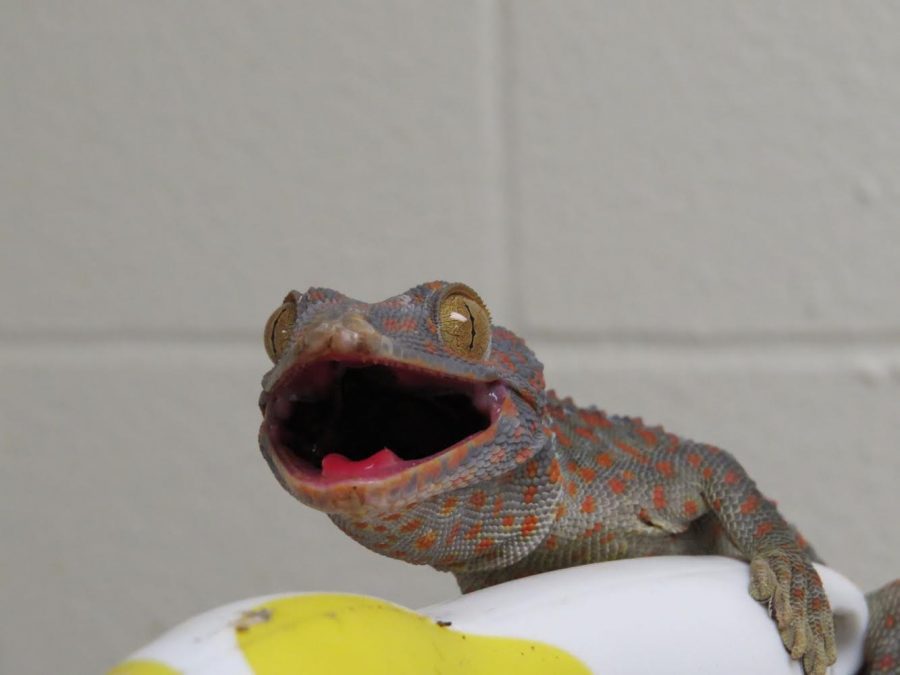Tokay gecko used as pest control at a UT-Austin lab
December 15, 2021
Editor’s Note: This article first appeared as part of the November 9 flipbook.
At night, a lizard hunts for cockroaches inside the halls of UT’s Skeleton Preparation Facility.
Kenneth Bader, manager of the Skeleton Preparation Facility located on the J.J. Pickle Research Campus, said he uses a Tokay gecko as a natural form of insecticide to keep the lab, which often hosts decaying animals and materials, clean.
“We were salvaging animals from wherever we could, whether they’re roadkill, from hunting or animals that died at zoos or wildlife,” Bader said. “We have a minimum of 15,000 specimens.”
The facility removes the flesh and meat from animals ranging from roadkill to rhinoceroses, so staff can distribute the skeletons for various kinds of research, Bader said. He said the lab uses dermestid beetles to clean the skeletons because they eat mummified remains.
“If an animal dies … while the carcass is still moist, usually you have things like flies that come in and feed on it,” Bader said. “But once it dries out and mummifies, that attracts dermestid beetles.”
The combination of dead animal flesh and beetle workers make the lab a perfect home for cockroaches, Bader said. However, the facility cannot use traditional insecticides since it would also harm the beneficial beetles.
“If it was in an apartment complex, they would be freaking out and bug bombing every building,” Bader said. “This isn’t a clean lab. It’s supposed to be dirty and messy and it’s always going to be dirty and messy, so you expect a few (cockroaches).”
Bader said Tokay geckos are often used in pet stores for pest control as well. The gecko is used every night to eat any crickets or cockroaches that might be in the building, he said.
While the gecko occasionally disappears during the summer, Bader said the gecko always returns.
“I always worry that he’s dead or gone,” Bader said. “I’m not sure if he actually found a way to get out of the building at night (or) during the summer, because the weather’s really nice, perfect weather for him during the summer. And then he just learned to come back into the building during the winter.”
Bader said the lab has a strict one gecko policy since if he added another male, they would try to kill each other, and if they added a female gecko, they would reproduce and create a colony.
Geology senior Michael Chiappone, who occasionally works in the lab, said he considers the gecko as a little friend in the lab.
“I certainly wasn’t expecting it when I first went in,” Chiappone said. “But after Kenny explained it, it made total sense. You need something to run pest control and for small insects and things like that, geckos are a great option. They’re good little predators. You don’t always see him when you walk in. Sometimes he’s hidden somewhere out of the way, but when he does pop out, it’s a fun little thing to see.”



